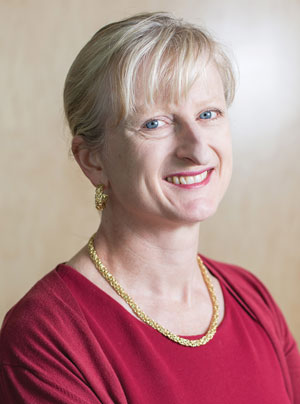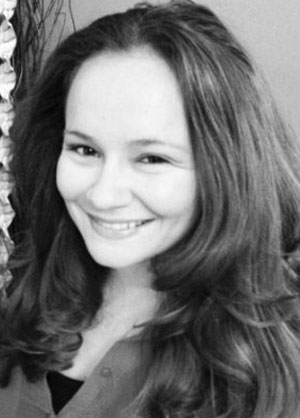Known for its technology-savvy Faculty of Law, the University of Calgary is taking practical steps toward achieving more performance-based learning and full engagement from its law students.
“The legal market is changing and they want their students to keep up,” says Elyssa Hogg, 3L University of Calgary law student, in response to the curriculum changes coming this year.
The program changes will roll out all at once across all three years of the curriculum, says Alice Woolley, associate dean of the Faculty of Law, University of Calgary. “Those changes are designed to maintain the academic vigour and excellence of our program while at the same time allowing students more opportunities for what we call performance-based learning,” says Woolley. Students need to think about the law beyond the classroom, she adds.
Changes to the program will encompass all three levels with block courses added to each one.
1L — Basics of law
First year will now include a three-week intensive foundation course in law and justice where students will get to learn the essentials of the legal system as well as issues around access to justice.
The course is essential for most law students and something law schools are not presently taking into account, says Hogg. When she started law school, Hogg didn’t even know how to read a case, she says. “I didn’t know how to write law exams and, for most law students who don’t come from a legal background, they have no idea what the different areas of law are and how the court system works,” she adds.
The faculty took all the feedback it received from students during special sessions held for law students at the beginning of the year, specifically for this reason, and implemented them into three-week block courses.
“University of Calgary will be the first to take a step in the direction of listening to students and what we actually need,” says Hogg. “I have a lot of friends in law schools across the country, and [when] I was going into law school, [I] was told ‘Well, you are not going to know what you are doing’ and none of us do and I think that’s fair, but why not show us what we are doing and give us a head start [so] that, when we start classes, we actually know what is going on.”

And that is exactly what the first-year three-week block course is designed to do. Basics such as writing, analyzing cases, briefing cases, developing research skills, and teaching students about the types of law and the court system in Canada is what will be covered during the intensive course three-week load. Class times will be longer and teachers will move beyond traditional methods of teaching, says Woolley.
2L — Negotiations and ethics
In the second year, another block course is introduced. Civil procedure, ethical lawyering, and negotiations are essential skills needed in lawyering and in life, says Daniel Lasko, 3L Calgary law student and summer research assistant for the new curriculum. “Everything is a negotiation, whether it is with your family or it is business,” he says. Having worked closely implementing the curriculum with various professors, Lasko sees the value in the program. Instead of theory-based learning, the school is implementing practical learning — a U of C philosophy and learning approach first implemented in the 1980s, Lasko says. “Teach them how to do tasks that they would have to do in their careers.”
Another unique element of the curriculum is the block courses themselves. They are generally three weeks in length, during which students attend the same class every day, all day for three weeks, and really focus in on the subject matter before commencing their regular course load.
3L — Mock trials
This school year, Hogg and Lasko, both entering their third year of law school, will prepare and conduct mock trials in the area of law of their choosing, using the help of actual lawyers. “The difference is that we are combining the expertise of lawyers with the expertise of the professors so the students could have both of those perspectives within a single class,” says Woolley.
The advocacy course is being expanded to three weeks instead of one and will specialize in civil or criminal litigation. Woolley anticipates that the trials will be conducted in front of an actual judge.
“The students will be doing much more hands-on, performance-based learning, where they are actually doing instead of just passively receiving the information,” says Woolley.
Intimate setting away from home
Unlike most other law schools, the Faculty of Law in Calgary admits a fairly small number of students, which has a big effect on teaching techniques, accountability, and creative solutions. “I think we have about 110 students per class, but some other law schools are quite a bit larger, maybe 200 or 300 students per class,” says Lasko. With an annual class size of about 100 students, there are about 30 students in any given course, he says. In such an intimate setting, he says, students get to know their peers well.
Lasko finished his undergrad in Toronto and is originally from Montreal. Hogg, who is originally from British Columbia, never thought she would end up at Calgary law, but she is glad she did. “My plan actually — and it had been my plan for four, five years — was to move to Toronto, and I got into schools in Toronto and London, and I just had a feeling U of C would be the right fit for me,” she says.
“I am definitely surprised that I ended up at Calgary and I like it so much.
“It [has] smaller class sizes than most schools across campus,” says Hogg. “It also means greater accountability amongst the staff and the faculty.”
The job market

The other reason students flock to Calgary for law is the job market. “Calgary is known for having fantastic job opportunities,” says Hogg. “We have a phenomenal career office that really does everything that it can to get us a placement.”
Lasko agrees. “I also came to Calgary because of the better job market for lawyers. That is the main reason,” he says.
The university faculty plans to stand by the long-lived tradition of being an innovative law school that combines academic rigour and practical applicability, which is part of the school’s history, says Woolley.
“I think it is those types of things… walking the walk and not just talking the talk that make it really different,” adds Hogg.

 And that is exactly what the first-year three-week block course is designed to do. Basics such as writing, analyzing cases, briefing cases, developing research skills, and teaching students about the types of law and the court system in Canada is what will be covered during the intensive course three-week load. Class times will be longer and teachers will move beyond traditional methods of teaching, says Woolley.
And that is exactly what the first-year three-week block course is designed to do. Basics such as writing, analyzing cases, briefing cases, developing research skills, and teaching students about the types of law and the court system in Canada is what will be covered during the intensive course three-week load. Class times will be longer and teachers will move beyond traditional methods of teaching, says Woolley. The other reason students flock to Calgary for law is the job market. “Calgary is known for having fantastic job opportunities,” says Hogg. “We have a phenomenal career office that really does everything that it can to get us a placement.”
The other reason students flock to Calgary for law is the job market. “Calgary is known for having fantastic job opportunities,” says Hogg. “We have a phenomenal career office that really does everything that it can to get us a placement.”